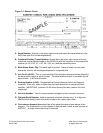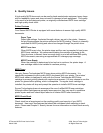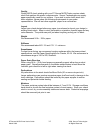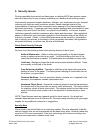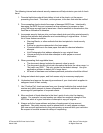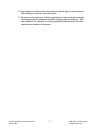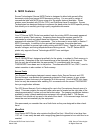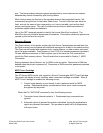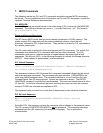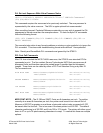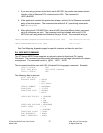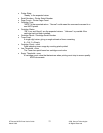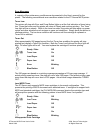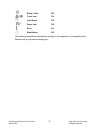
ST Secure MICR Printer User’s Guide 19 2006, Source Technologies
March 2006 All Rights Reserved
eye. This font provides protection against reproduction by most scanners and copiers
because they cannot successfully print the tiny letters.
Most check printers use this font in the signature area of their preprinted checks. We
recommend using this font to help deter check fraud. The text in this font can either be
fixed, such as the name of your organization, or it can be variable, such as the check
amount and payee name. The use of variable text provides an additional method of
protection against check counterfeiters.
Use of the “MP” designate symbol to identify the line as MicroPrint is optional. The
MicroPrint font only contains alphanumeric characters. Punctuation marks and spaces are
ignored by this font and do not print.
Resource Storage
The Flash memory in the printer contains the five Source Technologies secured fonts, but
the Flash memory can be loaded with additional resources for check or non-check printing.
The Flash can be loaded with signature fonts, overlay Macros, or other custom resources
up to the space available. Flash memory in the ST-9116 is read/write password protected.
To load additional resources to Flash requires you to first issue the PJL commands to
unlock the Flash memory device. We will review this in more detail in Section 7: MICR
Commands.
Storing resources (fonts, Macros, etc.) in RAM is also an option. Resources in RAM are
deleted when the printer is powered off. Resources in RAM cannot be password protected
in the printer.
MICR Toner Cartridge
The ST Secure MICR printer only supports a Source Technologies MICR Toner Cartridge.
The printer will display an error condition when a standard cartridge is installed. When a
MICR Toner Cartridge is installed the following occurs:
1. Control image density or print density is set to optimum levels for MICR
printing. Downloaded density commands and toner saver mode commands
are ignored by the printer.
When the PJL “MICRJOB” command is sent, the following occurs:
1. The printer forces internal copies to 1. Downloaded copy commands are
ignored.
2. Automatic reprint of jammed documents is disabled, forcing the application to
reprint any jammed documents. This provides an audit trail to the application
of the jam event.




